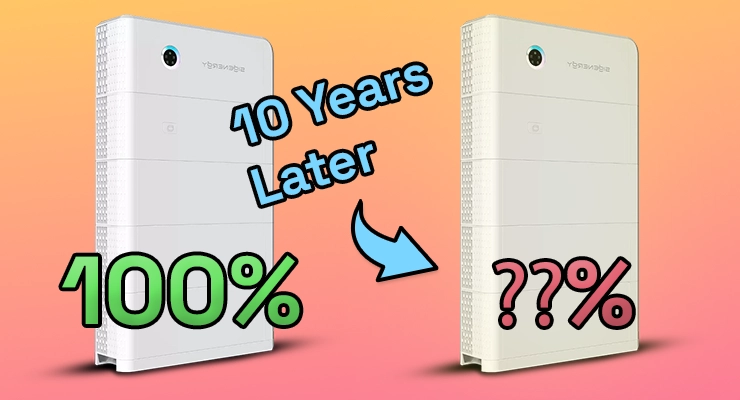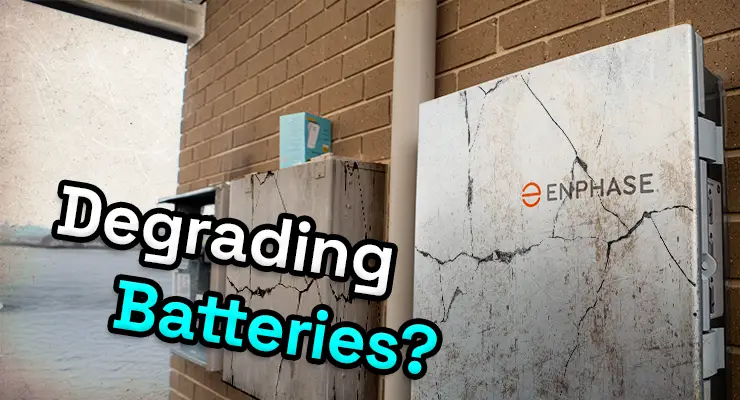Understanding Home Battery Longevity
Investing in a home battery is a significant decision, and it’s completely understandable to wonder about its longevity. You’re not just buying an appliance; you’re investing in your home’s energy future. The simple answer is that yes, just like the battery in your phone or laptop, home batteries do degrade over time. However, the technology is designed for durability, and understanding how and why it happens can help you maximise its lifespan and value.
Why do all batteries degrade over time?
Battery degradation is a natural and unavoidable process caused by the chemical reactions that occur every time a battery charges and discharges. For home batteries, this loss of capacity happens in two main ways: cycle degradation and calendar ageing.
Cycle degradation occurs with use. Every time you charge your battery with solar energy during the day and discharge it to power your home at night, it completes a cycle. Each cycle causes tiny, incremental changes to the battery’s internal components, gradually reducing its ability to store energy.
Calendar ageing is the degradation that happens simply over time, regardless of how much you use the battery. Factors like the ambient temperature and how long the battery sits at a very high or very low state of charge contribute to this process.
How is battery lifespan actually measured?
Manufacturers use a few key metrics to define a battery’s expected lifespan and performance, which you will find in their warranty documents.
- Warranty Period (Years): This is the most straightforward metric. Most leading battery brands in Australia offer a 10-year product warranty.
- Cycle Life: This specifies the number of full charge-discharge cycles a battery can perform before its capacity drops to a certain level. A typical range for modern LFP batteries is 3,000 to 5,000 cycles, though some premium models can be rated for 6,000 cycles or more, which usually covers more than 10 years of daily use.
- Throughput/Energy Discharged: This measures the total amount of energy the battery is guaranteed to deliver over its life, usually measured in megawatt-hours (MWh). For example, a warranty might cover 10 years or a specific throughput figure like 15.85 MWh for a 5kWh module, whichever comes first. These figures vary significantly between brands and models.
- End-of-Warranty Retained Capacity: This is a crucial figure. It’s the manufacturer’s promise of how much of its original storage capacity the battery will still have at the end of the warranty period. This is typically between 60% and 70%.
A battery with 65% retained capacity is still very useful; it just means a 10kWh battery will now effectively function as a 6.5kWh battery.
What is a realistic degradation rate for a home battery?
For a modern lithium-ion battery, particularly the common and safe Lithium Iron Phosphate (LFP) type, a loss of around 1-3% of its capacity per year is a reasonable expectation under normal operating conditions. The degradation is not always linear; it can be minimal at first and then accelerate as the battery gets closer to the end of its warranted life.
Most homeowners will find that their battery comfortably outperforms the warranty conditions. A standard 10-year warranty from a reputable brand ensures your investment is protected and will deliver reliable power for at least a decade, and likely longer.
How do Australian conditions affect battery life?
Australia’s climate, with its high temperatures, can be challenging for batteries. Heat is a significant factor in accelerating battery degradation. The chemical reactions inside a battery speed up at higher temperatures, which can reduce its long-term lifespan.
This is why proper installation is critical. Your accredited installer will ensure the battery is placed in a location that complies with Australian Standards (AS/NZS 5139), which dictate safe clearances and locations to protect it from extreme temperatures and direct sunlight. Choosing a well-ventilated spot out of direct sun, like in a garage or on a shaded southern wall, is crucial for preserving its health.
What can I do to maximise my battery’s lifespan?
While you can’t stop degradation entirely, you can certainly slow it down and get the most out of your investment.
- Choose the Right Size: An undersized battery will be overworked, cycling too deeply and too often, which can shorten its life. An accredited installer can help you size your system correctly based on your energy usage.
- Avoid Extreme Discharging: Modern battery management systems (BMS) are designed to prevent the battery from discharging completely. However, consistently running it down to its minimum level can help. Many systems allow you to set a minimum state of charge, for example, 20%, to preserve battery health.
- Ensure Proper Installation: As mentioned, location is key. Always use a professional accredited by Solar Accreditation Australia (SAA) who understands the requirements of AS/NZS 5139 for battery installations. As of 29 May 2024, SAA is the sole government-approved accreditation body, having replaced the Clean Energy Council’s scheme.
- Smart Management: Many modern systems, like those from Sungrow or Sigenergy, come with sophisticated apps that allow you to monitor and manage your battery’s performance, optimising it for longevity.
How do warranties reflect battery degradation?
A good warranty is your best guide to a battery’s expected lifespan and performance. Let’s look at a few examples of what you might see in the Australian market.
- Sungrow: Sungrow’s SBR series batteries come with a 10-year warranty that guarantees the battery will retain at least 60% of its usable energy according to the official manufacturer warranty document. Note that some retailers may advertise a 70% retention for the same product.
- Sigenergy: The SigenStor system provides a 10-year warranty, guaranteeing the battery will retain at least 70% of its usable energy or meet a minimum throughput figure, whichever comes first.
- Tesla: The Tesla Powerwall 3 comes with a 10-year warranty, guaranteeing it will retain 70% of its capacity. It also offers unlimited cycles for typical residential self-consumption use, but the warranty requires a constant internet connection for software updates.
It’s important to remember that these warranties exist alongside your rights under Australian Consumer Law, which provides guarantees for products to be of acceptable quality.
Your next step
It’s clear that while battery degradation is a real factor, modern home batteries are built to last, with strong manufacturer warranties providing a safety net for your investment. They are designed to be a reliable, long-term part of your home’s energy solution, typically for 10 to 15 years.
When you’re ready to explore your options, the most important step is to speak with a qualified and accredited installer. They can assess your specific needs, recommend a correctly sized system, and ensure it’s installed in a way that maximises its performance and lifespan for years to come. If you’d like help finding accredited local professionals, Your Energy Answers offers a free service to connect you with trusted experts in your area.





